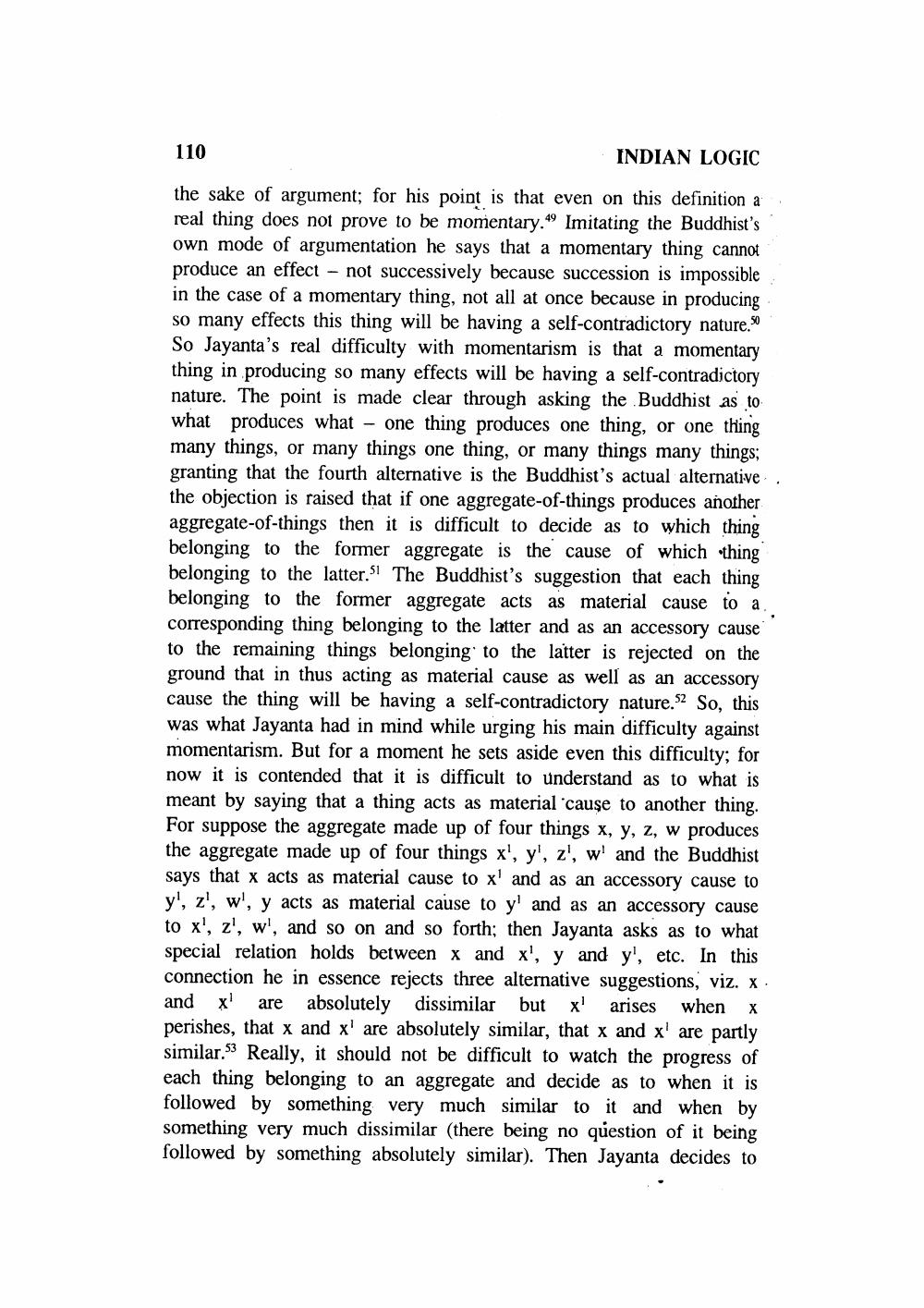________________
110
INDIAN LOGIC
the sake of argument; for his point is that even on this definition a real thing does not prove to be momentary." Imitating the Buddhist's own mode of argumentation he says that a momentary thing cannot produce an effect not successively because succession is impossible in the case of a momentary thing, not all at once because in producing so many effects this thing will be having a self-contradictory nature. So Jayanta's real difficulty with momentarism is that a momentary thing in producing so many effects will be having a self-contradictory nature. The point is made clear through asking the Buddhist as to what produces what one thing produces one thing, or one thing many things, or many things one thing, or many things many things; granting that the fourth alternative is the Buddhist's actual alternative the objection is raised that if one aggregate-of-things produces another aggregate-of-things then it is difficult to decide as to which thing belonging to the former aggregate is the cause of which thing belonging to the latter." The Buddhist's suggestion that each thing belonging to the former aggregate acts as material cause to a. corresponding thing belonging to the latter and as an accessory cause to the remaining things belonging to the latter is rejected on the ground that in thus acting as material cause as well as an accessory cause the thing will be having a self-contradictory nature. So, this was what Jayanta had in mind while urging his main difficulty against momentarism. But for a moment he sets aside even this difficulty; for now it is contended that it is difficult to understand as to what is meant by saying that a thing acts as material 'cause to another thing. For suppose the aggregate made up of four things x, y, z, w produces the aggregate made up of four things x', y', z', w' and the Buddhist says that x acts as material cause to x' and as an accessory cause to y', z', w', y acts as material cause to y' and as an accessory cause to x', z', w', and so on and so forth; then Jayanta asks as to what special relation holds between x and x', y and y', etc. In this connection he in essence rejects three alternative suggestions, viz. xand x1 are absolutely dissimilar but x' arises when X perishes, that x and x' are absolutely similar, that x and x' are partly similar. Really, it should not be difficult to watch the progress of each thing belonging to an aggregate and decide as to when it is followed by something very much similar to it and when by something very much dissimilar (there being no question of it being followed by something absolutely similar). Then Jayanta decides to
53
-




